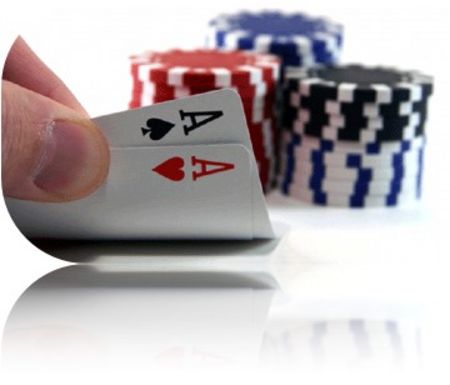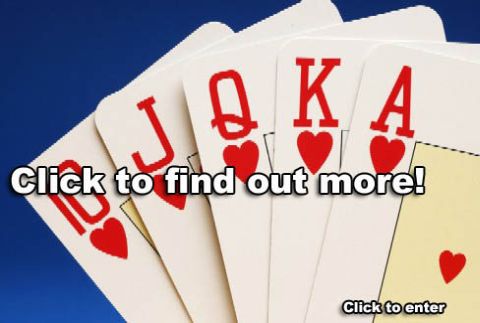Two-Suited2

Your strategies will change somewhat when the flop is two-suited, Let's first look at
strategies when you flop top pair and a flush draw. In those situations where you
may have folded a vulnerable pair against several opponents, you would now play
since you have a flush draw. You are also less worried about driving out your
opponents with these types of hands if the pot is small. For example, if you hold A
♦
J
♦ in early position with a flop of J ♣ 7
♦ 4
♥, you would be concerned with driving out
opponents to protect your top pair: however, if the flop is J ♣ 7
♦ 4
♦, your main
strategy may not always be to drive out players on the flop. For example, you might
not raise with a small pot so that other players will play behind you; however, you
should usually raise when there is a large pot. Flush draws are discussed in more
detail in a later chapter.
When you hold top pair or an overpair but don't have a flush draw, you now must
worry that your opponents have a draw. This has two significant meanings for you.
First, you should be more inclined to check and fold your borderline hands than
otherwise, especially when there are several players in the hand. Second, with your
stronger hands, be careful not to give free cards since you have a better chance of
being paid off with players on flush draws.
Depending on how many players are in the pot, you need to choose the best
strategy that will charge the highest price for your opponents to draw. On the flop,
you can either bet out, check-raise, raise, or just call and wait until the turn to raise.
Waiting until the turn to show your power can sometimes be the best play by
making your opponents pay two big bets to see the river card. This also allows you
to back off or possibly fold if a scare card comes on the turn.
If you bet out, beware of players who raise from late position. In many cases, they
are trying to buy a free card on the turn. If you suspect that you indeed have the
best hand, you should reraise, or at the very least, call and bet out the turn if a
scare card does not come. If raised again on the turn, you will need to decide
whether or not you have the best hand based on the likelihood that your opponent
would raise the turn as a semi-bluff or with a hand weaker than yours.
NEXT...Three-Suited

